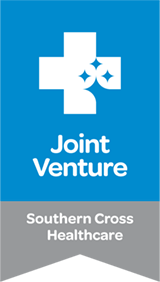- Services & Locations
- Physio Clinic Locations
Keeping your body & mind A+ View mapBOOK NOWOnline Shop
Northland
Whangarei- Dargaville
Rodney
Snells Beach- Warkworth
- Silverdale
North Shore
Albany- Albany - Neuro Physio Clinic
- Milford
- Mt Eden
- Ellerslie
- Clinical Suite Balmoral
East Auckland
Highbrook East Tamaki- Howick
South Auckland
Airport Oaks- Papakura - Counties Care
- Pukekohe
- Taupo
- Turangi
- Clinical Suite Waikato
- Rotorua
Taranaki
Hāwera- New Plymouth
- Ōpunake
Manawatu - Whanganui
Feilding- Marton
- Palmerston North
- Whanganui
Auckland Central
Bay RoskillWaikato
Hamilton - Te Rapa - Blog
- About Active+
- About Active+
- Become part of Active+
- Become part of Active+
- Lymphedema – treated with Complete Decongestive Therapy (CDT) to reduce swelling.
- Sports injuries – tailored recovery programs for safe rehabilitation.
- Muscular dystrophy – mobility exercises and supportive interventions to manage weakness.
- Back and neck pain – alleviation of acute and chronic pain through targeted interventions.
- Limited range of motion (ROM) – rehabilitation strategies to improve flexibility and mobility.
- Osteoporosis – prevention and management of bone fragility through specialised exercises.
- Vertigo – balance training and vestibular rehabilitation to mitigate dizziness.
- Headaches – neck mobility exercises and posture correction for headache relief.
- Neck mobilisations– strengthening exercises and ergonomic advice for headache relief.
- Carpal tunnel syndrome – ergonomic adjustments and therapeutic exercises for wrist pain.
- Chronic fatigue syndrome – endurance training and energy conservation strategies for fatigue management.
- Respiratory issues – pulmonary rehabilitation for improved lung function.
- Burns – scar tissue management and functional rehabilitation post-injury.
- Joint replacement – Post-operative rehabilitation to optimise joint function.
- Ankle sprain – Rehabilitation exercises to promote healing and prevent recurrence.
- Parkinson’s disease – Movement training and strength exercises to manage symptoms.
- Foot fracture – rehabilitation protocols for safe return to activity.
- Huntington’s disease – symptom management through physical therapy interventions.
- Knee ligament injury – rehabilitation strategies to restore stability post-injury.
- Pelvic floor dysfunction – pelvic floor exercises and lifestyle modifications for pelvic health.
- Cancer – symptom management and functional rehabilitation during treatment.
Common Conditions Treated by Physiotherapists
Introduction
Physiotherapy is a vital tool in health and wellbeing, helping to address a myriad of medical conditions. From sports injuries to chronic musculoskeletal disorders, physiotherapists play a vital role in enhancing the quality of life for countless individuals.
In this article, we explore the common conditions that can be treated by our Active+ physiotherapists, highlighting the range of conditions they address and the impact of their involvement.
Understanding Physiotherapy
Physiotherapy encompasses a holistic approach to healing, comprising assessment, diagnosis, and personalised treatment plans. Through manual therapy, therapeutic exercises, and patient education, physiotherapists aim to alleviate pain, restore mobility, and enhance functional abilities.
Physiotherapy offers solutions for a wide spectrum of conditions, ranging from acute injuries to chronic diseases. By addressing both the symptoms and underlying causes of various ailments, physiotherapists empower individuals to regain control of their health and well-being.
Common conditions treated by physiotherapists
Techniques used by physiotherapists
Manual therapy
Through techniques like massage and joint mobilisation, physiotherapists alleviate pain, improve range of motion, and enhance exercise effectiveness.
Exercise therapy
Tailored exercise regimens promote flexibility, strength, and balance, aiding both recovery from injury and prevention thereof. Exercises may encompass stretching, Pilates, gym-based workouts, and more.
Education
Empowering clients with knowledge about their condition fosters active participation in the recovery process. Physiotherapists utilise educational tools such as videos, anatomical models, and diagrams to elucidate treatment plans and encourage informed decision-making.
Hydrotherapy
Pool-based therapy provides a low-impact environment ideal for conditions requiring gentle resistance and mobility therapy, such as joint damage or post-surgical rehabilitation.
Shockwave therapy
This non-invasive treatment utilises high-frequency pressure waves to promote tissue regeneration and alleviate chronic conditions unresponsive to conventional treatments. Shockwave therapy accelerates (aids?) pain relief and enhances exercise tolerance, particularly in cases supported by validated research.
How physiotherapy facilitates recovery
Diagnosis and treatment
Physiotherapists diagnose conditions contributing to pain or discomfort and recommend personalised treatment plans to expedite recovery.
Improving range of motion
By optimising movement efficiency and comfort, physiotherapy enhances flexibility, reduces pain, and promotes a return to normal activities.
Correcting muscle imbalances
Through targeted manual therapy and exercise interventions, physiotherapists address muscle imbalances, restoring proper function and minimising the risk of re-injury.
Safe and effective exercise
Physiotherapists guide clients in safe and effective exercise regimens, aiding in the restoration of movement and strength following injury.
Pre- and post-surgical rehabilitation
Physiotherapy interventions before and after surgery facilitate recovery, ranging from gentle techniques to comprehensive rehabilitation programs tailored to individual needs.
Summary
By addressing an array of medical conditions through personalised treatment plans and ongoing support, physiotherapists empower individuals to overcome obstacles and regain independence. Whether it's relieving pain, restoring mobility, or improving functional abilities, physiotherapy plays a crucial role in enhancing quality of life.
Through a collaborative approach alongside other healthcare professionals, physiotherapists tailor recovery programs to individual needs, guiding clients through every step of the rehabilitation journey.
Need a physiotherapist?
Experiencing discomfort or mobility issues? Active+ can help! Our skilled physiotherapists offer personalised care for all needs. Click here to find your nearest physiotherapist.
Shareby Active+ Published
Keeping your body & mind A+






